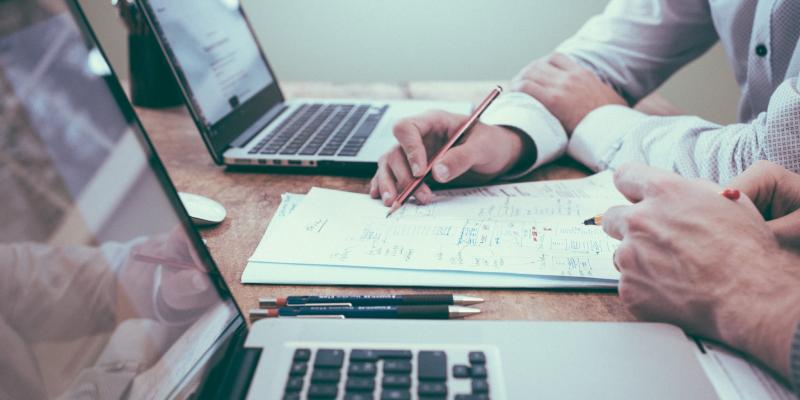The Critical Importance of an Accurate Balance Sheet

Balance Sheet is also known as Statement of Financial Position as it shows the financial status of the business as of a given point in time. Whether the business is a sole proprietorship, a partnership or a corporation, it is critical that balance sheet is accurately prepared. It is a compulsory part of the Financial Statements as it shows what your company owns as well as what it owes. Therefore, it is also important that accountants or business-owner know how to read the balance sheet and all the valuable information it offers. A quick glance at it will tell you the spending and earning of the business. Investors, lenders and creditors are especially interested in your balance sheet to determine the liquidity and solvency of the business.
What are Financial Statements?
Financial Statements are the documents that provide complete financial picture of the company. These are prepared as per the guidelines provided by the International Financial Reporting Standards to ensure the accuracy and truthfulness. This is important for the users of the financial statements to make an informed decision. The Financial Statements consists of the following:
- Statement of Profit or Loss
- Statement of Financial Position
- Cash flow Statement
Balance Sheet shows entity’s assets, liabilities and equity as of the reporting date while income statement shows its financial activities and operations for the reporting period or a business cycle. It includes revenues, expenses, profits and losses. As for cash flow statement, it provides a complete view of the changes in company’s cash flow and often required by lawyers when in necessary. It further summarizes the type of business activity, whether it’s operational, financial or investing, the entity earns and spends the cash on for a given reporting period. Financial Statements also include supplementary notes providing additional information on various activities.
What is a Balance Sheet?
Before understanding the importance of accurate balance sheet you should know what the balance sheet is, why firms prepare it, types of balance sheet and the formats of balance sheet. Balance sheet consists of three components; Assets, Liabilities and Equity. Asset shows the items that your business own. Liability shows what your business owes to others while Equity is the amount that shareholders own.
According to Accounting equation or Formula of Balance sheet:
Assets = Liabilities + Shareholder’s Equity
Assets
Assets are the resources owned by a firm. These can be tangible as well as intangible. There are mainly two types of assets; Non-current and current. Current assets are those that can be converted into cash within one year or one accounting period or one business cycle. Cash, accounts receivable, prepaid expenses, inventory and short-term investments are current assets.
While non-current assets are the fixed assets that have usually longer life and not expected to turn into cash within one year. These are the long-term investments of the company which include property, plant and equipment, leasehold improvements, investments in other corporations, vehicles, furniture and fixtures and land, etc.
Liabilities
Liabilities are the obligation that arises due to business transactions. In other words, liabilities are the claim against the assets of a company or a financial debt that a company has to pay off. Just like assets, liabilities are current as well as non-current. Current liabilities are those obligations that a business has to pay off within 12 months or within one business cycle.
These include, accounts payable, short-term bank loans, income tax payable, dividend payable or interest payable, etc.
On the other hand, long-term liabilities or non-current liabilities are the debts that are to be paid off in over a year’s time. These are the source of long-term financing of the company and therefore, are very crucial in determining the future of the company. Non-current liabilities include; bonds and debentures, mortgages, long-term loans, deferred tax, pension benefits and long-term lease obligations.
Equity
When total assets are subtracted from total liabilities, the rest is equity. For a sole-proprietor, it is called owner’s equity while for a corporation, it is shareholder’s equity. This is the amount what a business actually owns. In other words, after selling all the assets and paying off all the liabilities, this is the amount that shareholders or owner of the business will get. Retained earnings, reserves and paid-in capital make up equity.
Why balance sheet is so important?
Now that you’re aware of the purpose and components of a balance sheet, you can understand its importance for the business as well as the users of the financial statements. Whether you’re talking about small business such as sole proprietorship or association of persons, or a multi-billion dollar corporation, balance sheet is an immensely critical element of the financial information that can result in great damage to the business if not prepared accurately. Without that, it’s almost impossible to conclude the health of a firm’s financial standing. A balance sheet is the official report that gives investors insight into its monetary strength.
Moreover, for the users of financial statements such as, lender, vendor, investors, customers and various other financial institutions, an accurate balance sheet is an essential to determine whether to do business with you or not. Financial analysts use different technique to determine the financial leverage, solvency, activity and capital structure of the company.
Recently I came across a site which contains some valuable information regarding the balance sheet and it has various balance sheet examples and templates that you can use for business for free!
For Investors
For investors, an accurate balance sheet is especially important because they can determine whether the company has enough cash to continue its operation without any financial trouble. Furthermore, balance sheet can also tell how a company has been financing its growth and how well can it turn its assets into cash or sales.
For Lenders
A healthy looking balance sheet is also of extreme interest to a lender. Say your company is looking to take out a substantial loan from a bank or any other financial institution. Although, they may ask to see your financial statements in full, it’s the balance sheet that’ll give them the real insight into whether or not your company is a safe bet or a risk worth avoiding.
For Vendor
When doing business with you, a vendor may want to look at your financial condition. They may want to look at your balance sheet to know the liquidity and cash operating cycle of the business. It will also help them determine your credit limit and business terms.
For the Business
The growth of your business rests on accurate reporting in your company’s financial statements. Balance sheet informs owner of the business that how well their company is performing. If a business doesn’t timely analyze and take measures to improve its financial health, it can go bankrupt. Therefore, it is critical to not only prepare balance sheet accurately but also keep analyzing it.
Conclusion
Regardless of your company’s size, no serious business owner or decision maker should ever be comfortable entrusting the accuracy of their balance sheet – or any aspect of the company’s financial statements – to someone without the necessary skill and experience to pull it off. To ensure accuracy in accounting and to adhere with the standards of GAAP or IAS, it is essential to hire qualified and professional accountants or outsource all bookkeeping and preparation duties to a qualified third party.
More to Read:
Previous Posts:





